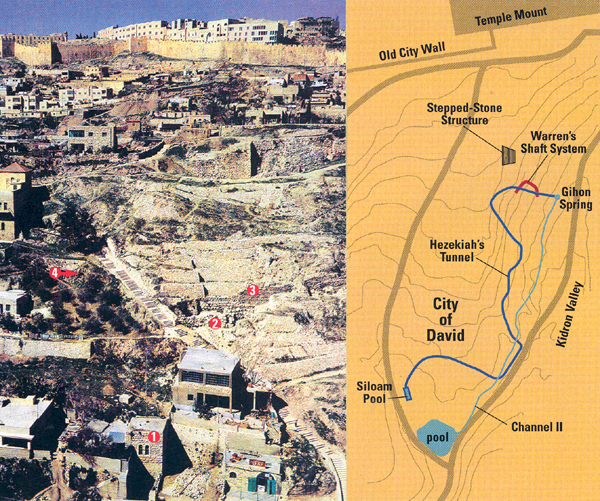Image Details

The eastern slope of Jerusalem contained the ancient city’s water supply—and the means to reach it. Marked on the photo are the modern springhouse (1) that stands today on top of the Gihon Spring; the spring lay outside the city’s Middle Bronze Age (18th-17th century B.C.E.) and late Iron Age (eighth-seventh centuries B.C.E.) walls (2 and 3). Warren’s Shaft is reached today via a gabled entrance (4). The plan shows the spring and shaft, a channel that brought water to the eastern edge of the city, and Hezekiah’s Tunnel, a major construction project ordered by the eighth-century B.C.E. king when faced with the prospect of an Assyrian siege.
